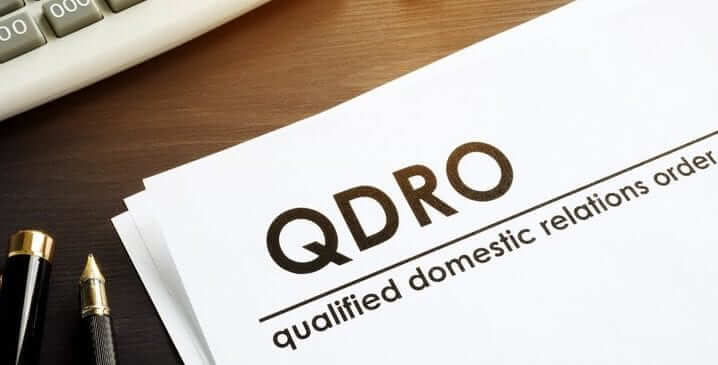After most people go through a divorce, their focus tends to turn to their future. There are always immediate issues to deal with, such as living arrangements, child custody, or alimony. But after that, there’s retirement. That’s when QDRO comes into play. QDRO stands for Qualified Domestic Relations Order, and it’s a requirement for anyone looking to split up a retirement plan, after a divorce, legally. Since it’s both a complicated and necessary document, it’s important to understand the drafting process, how long it takes, and who should be involved in the creation of this type of court order. Without a QDRO, you can’t guarantee that you will benefit from an ex-spouse’s retirement savings. In this article, we provide everything you need to know about the Qualified Domestic Relations Order process.
QDRO Defined
Many divorcing couples will hear of a QDRO for the first time with their divorce attorney. That’s because retirement plans are under heavy protection federal law and they used to be excluded from divorce proceedings. However, after 1984, Congress passed a law that made a special exception. They created qualified domestic relations orders to allow for retirement plans to be split after a divorce or legal separation. In effect, specialists started focusing solely on drafting QDROs and creating legal pathways for 401(k)’s, retirement plans, and pensions to be divided up. In order to complete a QDRO, you’ll need to include:
- The retirement plan owner’s full name and the address of their permanent residence
- The payee’s full name and the address of their permanent residence
- The percentage that the alternate payee will receive
- How the attorneys determined that percentage
- Amount of payments that will be included in the QDRO
- The processing of payments
Obtaining a Qualified Domestic Relations Order
After the finalization of your divorce, there will be a judgment regarding the separation of assets. This is when you’ll know if you were granted a portion of your ex-spouse’s retirement plan. However, when a judge simply states that you’ll receive a portion of the retirement plan, that doesn’t automatically make it complete. This is when a QDRO becomes necessary. For instance, let’s say that a judge grants you 50% of your ex-spouse’s retirement plan. This judgment alone does not immediately make it true. It’s at this point that you and your attorney should begin to discuss drafting a Qualified Domestic Relations Order.
How Long Does the QDRO Process Take?
Unfortunately, the procedure doesn’t move along as quickly as most would like. However, it is an important document that passes through a lot of important hands, so it needs to be completed accurately. It’ll take anywhere between three to six months for a QDRO procedure to be complete. Of course, when the two parties and plan administrators agree to the terms of the QDRO, each step moves along quickly and efficiently. If the parties can’t agree to the terms of the QDRO or if one of the plan administrators gets held up along the way, it could take a lot longer. It’s also important to remember that every retirement plan is unique and has different terms and conditions. Finding practical ways to divide them can take time.
Here are the basic steps in a Qualified Domestic Relations Order process:
- Begin drafting the QDRO.
- Obtain a plan administrator’s approval.
- Have all of the parties involved approve and sign the QDRO.
- Submit the signed QDRO to the court for final approval by a judge.
- Send a certified copy of your finalized QDRO back to the plan administrator.
Who is the Alternate Payee?
The spouse that’s required to split their retirement plan is referred to as a participant. The alternate payee is the individual that’s receiving the portion of the retirement plan that’s stated in the QDRO. Most of the time, this will be an ex-spouse that has a significantly lower income than the income earner. It’s important to remember that the alternate payee doesn’t necessarily have to be the ex-spouse. However, it can’t be a close friend or extended relative either. Under federal law, the alternate payee can be a spouse, former spouse, child, or other dependents of the participant.
For More Information on Obtaining a Qualified Domestic Relations Order
If you’ve been granted a portion of your ex-spouse’s retirement plan, it’s never a good idea to wait to complete a QDRO. A divorce attorney can get the process moving as quickly and as smoothly as possible. As mentioned above, the process can be long, complicated, and include a lot of discussions with attorneys and plan administrators. It’s important to be able to depend on a legal expert to explain each step and navigate any legal issues that may arise along the way. The process is a lot less daunting when you’re working with an experienced attorney that can help you to understand your options. Contact one today for more information!

